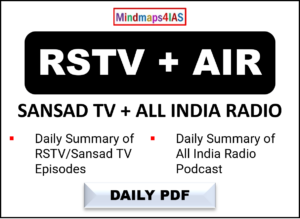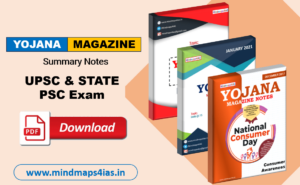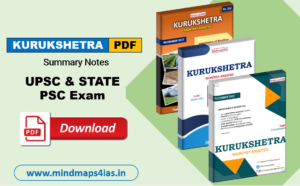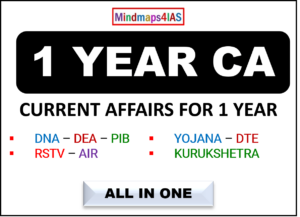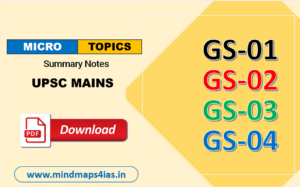- Source – The Hindu
- Link – https://www.thehindu.com/opinion/op-ed/missing-in-manifestos-childrens-issues/article68246301.ece
- Syllabus – GS Paper 02
- Topic – Welfare Schemes for Vulnerable Sections of the population by the Centre and States and the Performance of these Schemes
What is the issue?
The article highlights the lack of attention given to children’s interests by political parties in India, despite children constituting about 30% of the country’s population. It emphasizes the need for political parties to address issues related to children’s nutrition, education, and health in their election manifestos.
What is the education related promises made by different political parties in India?
- BJP: Promises to strengthen PM SHRI Schools, Ekalavya Schools, and other model schools. Aims for 100% Gross Enrollment Ratio (GER) from pre-school to secondary level without concrete steps.
- Congress: Plans to amend the Right to Education Act (RTE) to make education from Class 1-8 compulsory and free. Also pledges financial support to curb dropout rates.
- CPI(M): Vows to expand the RTE Act to cover ages 3 to 18 years.
- DMK: Pledges financial support to address dropout rates.
What are the nutrition and healthcare related promises made by various political parties?
- BJP: Focuses on eliminating malnutrition among tribal children.
- CPI(M): Commits to universalizing the Integrated Child Development Services (ICDS) Scheme for all children aged 0-6 years, providing nutritious meals, immunization, and health check-ups.
- Congress: Plans to expand the midday meal programme up to Class 12. DMK aims to extend the Chief Minister’s Breakfast Scheme to aided schools (Class 1-5), address nutritional deficiencies, and achieve full child immunization within 5 years.
- DMK: Promises budgetary allocations for comprehensive healthcare in the first 1,000 days of a child’s development, and mental health programmes in schools.
What are the important issues not covered by any political parties?
- Children’s Participation in Decision-Making: Absence of provisions for involving children in decision-making processes.
- Online Safety and Prevention of Child Exploitation: Lack of initiatives addressing online safety and preventing child exploitation.
- Lack of Child-Rights Based Approach: Manifestos tend to group children with ‘women’ or ‘youth’, neglecting their specific rights and needs.
- Focus on Cost-Intensive Model Schools Over Systemic Improvements: Emphasis placed on select model schools rather than systemic reforms to enhance the public education system.
Political parties must prioritize education, child nutrition, and health in their manifestos, and voters need to assess the parties’ visions and seriousness in safeguarding the future of children.
SOME BASICS YOU SHOULD KNOW
What should be the approach of Promises in political party manifestos regarding children?
Education:
- Promise: Ensure equitable access to quality education for all children, focusing on infrastructure improvement and teacher training.
- Example: Expand the scope of the Sarva Shiksha Abhiyan (SSA), which aims to provide universal elementary education, ensuring no child is left behind.
Healthcare:
- Promise: Enhance healthcare services specifically tailored for children, including immunization drives and nutritional support.
- Example: Strengthen the National Health Mission (NHM) to provide comprehensive healthcare services, such as the Rashtriya Bal Swasthya Karyakram (RBSK) for early detection and intervention of children’s health issues.
Child Protection:
- Promise: Strengthen child protection laws and establish dedicated mechanisms to combat child trafficking, abuse, and exploitation.
- Example: Implement the Integrated Child Protection Scheme (ICPS) to support vulnerable children through various welfare measures and rehabilitation services.
Nutrition:
- Promise: Ensure nutritious meals for children, especially in schools and anganwadis, to combat malnutrition.
- Example: Expand the Mid-Day Meal Scheme (MDMS), providing free meals to school children to improve attendance, nutrition, and overall health.
Child Rights and Participation:
- Promise: Promote children’s rights and encourage their participation in decision-making processes at local and national levels.
- Example: Establish Bal Panchayats or Children’s Councils in schools and communities to empower children and advocate for their rights.
Social Welfare:
- Promise: Extend social welfare schemes to cover children from marginalized and disadvantaged backgrounds, ensuring inclusivity.
- Example: Implement scholarships and financial assistance programs like the National Means-cum-Merit Scholarship Scheme (NMMSS) to support children’s education aspirations.
Digital Literacy and Online Safety:
- Promise: Introduce initiatives to promote digital literacy among children and ensure their safety in the online environment.
- Example: Launch awareness campaigns and educational programs under the Digital India initiative to educate children about safe internet usage and cybersecurity.
Cultural and Sports Development:
- Promise: Foster cultural and sports activities to promote holistic development and creativity among children.
- Example: Support initiatives like the Khelo India program to identify and nurture sporting talent among children across the country.




